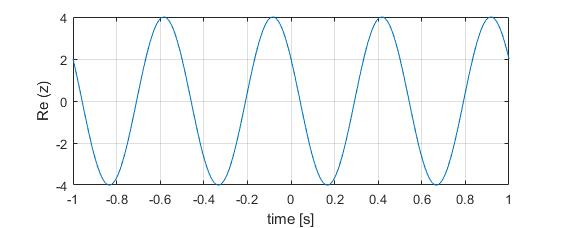Introduction
In addition to the set of real numbers that everyone is used to working with, a whole new dimension is introduced by complex numbers. These complex numbers can be used to describe sinusoidal signals through phasors, which has proven to be useful in many applications.
Screencast video [⯈]
Module overview
This module covers the following topics:
- Number sets - This section covers the inevitable need for complex numbers for engineering practices.
- Euler equations - Through the use of Taylor expansions, we are allowed to rewrite sinusoids in terms of complex exponentials.
- Complex numbers [⯈] - This section elaborates more on the notation of complex numbers and introduces mathematical operations on these complex numbers.
- Phasors [⯈] - This section introduces sinusoidal signals in terms of time varying complex exponentials.
Exercises
In this section several exercises are available, including their answers. The exercises marked in blue are explained by means of more extensive pencast videos.
Video quiz
The complex number is equal to ...

Exercise bundle
Answers
Download the answers here.
Pencast videos [⯈]
The above video player contains a playlist of all pencast videos which can be expanded by clicking the playlist icon in the upper-right corner.
MATLAB lab
Accompanied to this modules are some exercises in MATLAB, which will test your knowledge of the module and will help improve your MATLAB skills.
Lab assignment
MATLAB demo [⯈]
Summary
- The imaginary unit:
- Euler equation:
- Alternative expression for and function:
- Polar representation set of complex numbers:
- Cartesian representation set of complex numbers:
- Conversion Cartesion to Polar representation:
- Conversion Polar to Cartesian representation:
- Complex conjugation: Replace by (and vice versa!)
- Length of complex vector:
- It is the easiest to use Cartesian notation for addition and subtraction, and polar notation for multiplication and division.
- Phasor representation of sinusoidal signals:
- The sum of original sinusoidal signals, all with the same radian frequency , results in one sinusoidal signal with the same radian frequency . Amplitude and phase of this resulting signal can be found by adding the complex representation of amplitude and phase of the individual original sinusoidal signals.